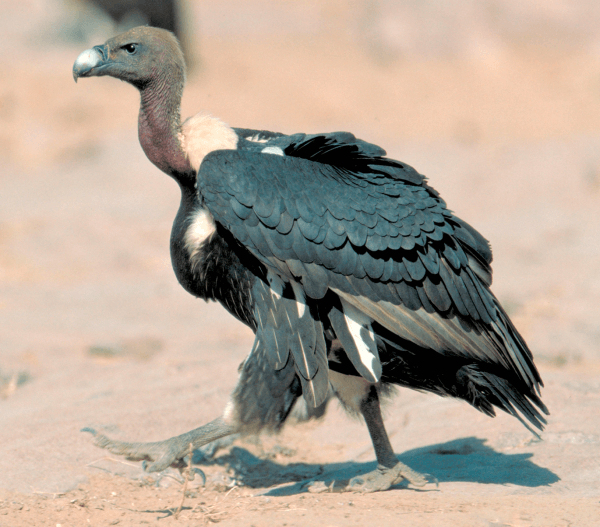Facts About White-rumped vulture
The white-rumped vulture, native to South and Southeast Asia, has faced critical endangerment since 2000 due to a dramatic population decline. This decline, primarily caused by diclofenac poisoning leading to kidney failure, has reduced what was once the world's most abundant large bird of prey to fewer than 10,000 mature individuals as of 2016.
This medium-sized vulture is easily identifiable by its white neck ruff, white back and rump, and otherwise dark plumage. Smaller than the Eurasian Griffon, it weighs between 3.5 to 7.5 kg, measures 75 to 93 cm in length, and has a wingspan of 1.92 to 2.6 meters. White-rumped vultures typically build their nests in tall trees near human settlements, particularly in northern and central India, Pakistan, Nepal, Bangladesh, and parts of Southeast Asia.
As scavengers, these vultures play a crucial role in the ecosystem by feeding on carcasses. They soar high in the sky to spot their next meal. However, the introduction of diclofenac, an anti-inflammatory drug used in livestock, has been devastating. The drug causes kidney failure in vultures that consume the carcasses of treated animals, leading to a 99% population decline in India and neighboring countries since the early 1990s.
In response, several conservation efforts have been implemented. These include banning diclofenac, promoting safer alternative NSAIDs, initiating captive breeding programs, and setting up vulture restaurants where safe carcasses are provided. These efforts have seen some success, such as the hatching of the first captive-bred white-rumped vultures in 2007.
Behavior-wise, white-rumped vultures are active in the morning, quickly descending to feed on carcasses. They often perch on nearby trees and are known to feed even after dark. Nesting typically occurs from November to March, with these birds preferring trees near human habitation. The female usually lays a single egg, and both parents care for the chick, which stays in the nest for about three months.
The plight of the white-rumped vulture underscores the critical need for ongoing conservation efforts to prevent this species from vanishing entirely.

 China
China